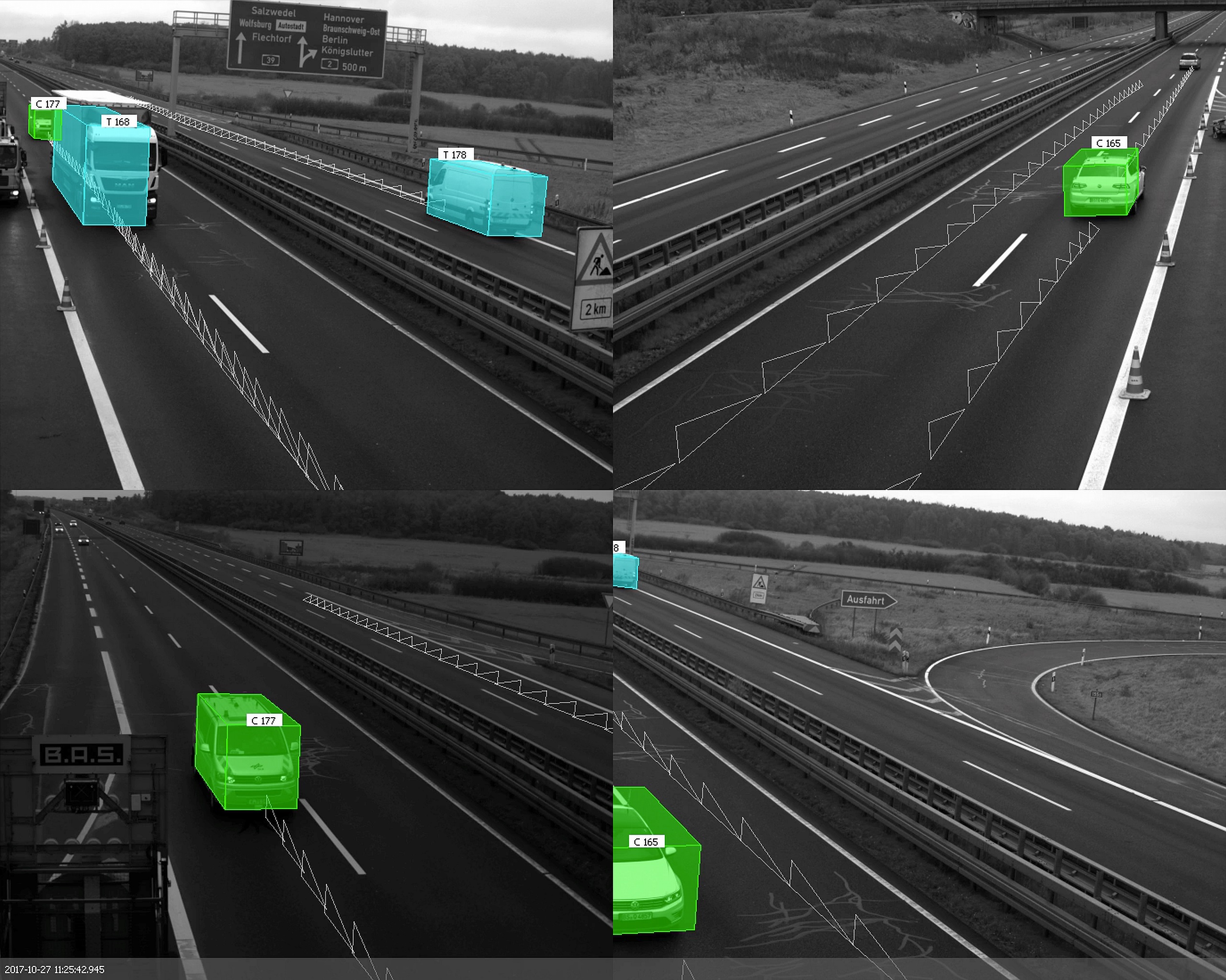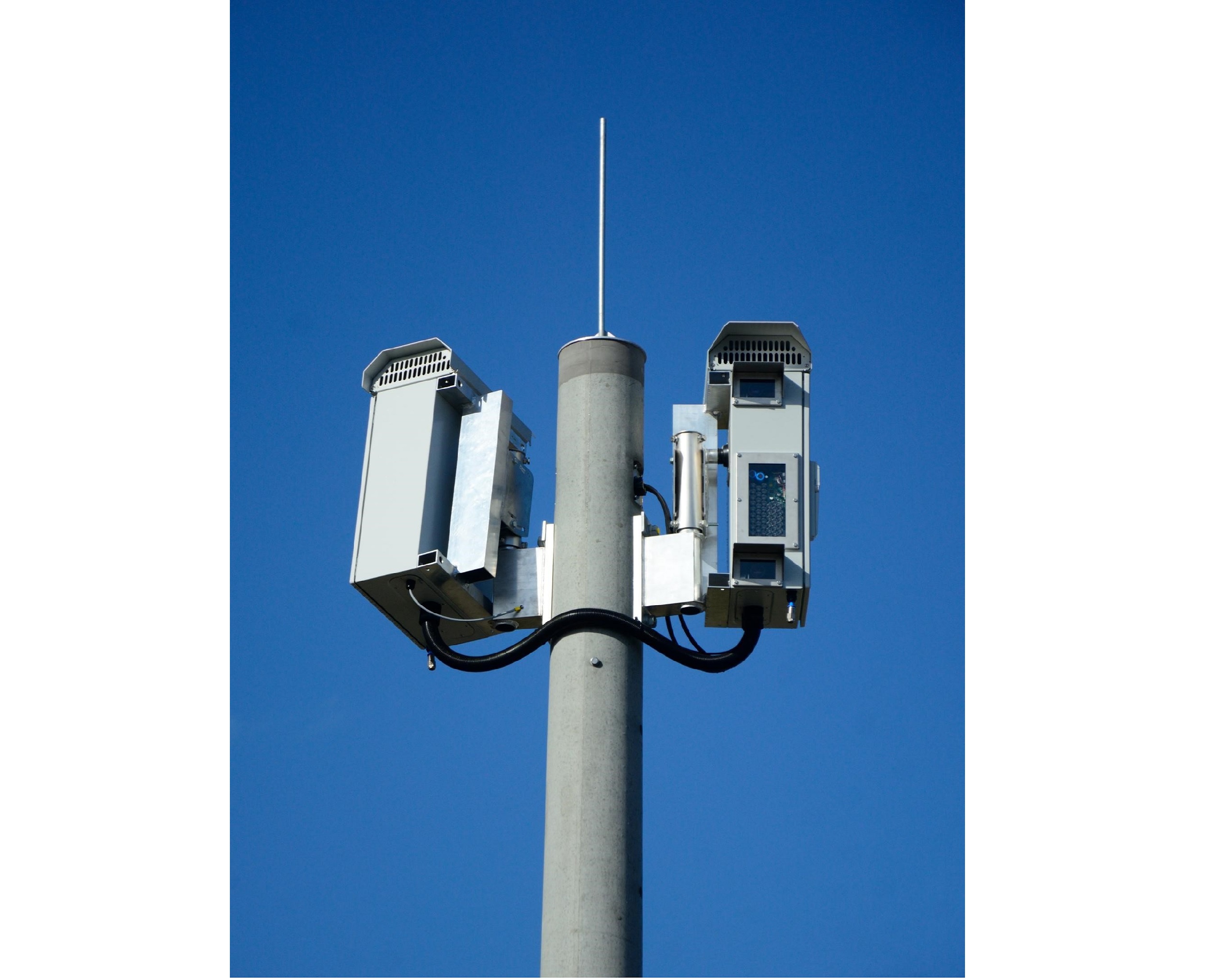The focus of the Test Bed Lower Saxony is the comprehensive evaluation of traffic scenarios and the development of new driving assistance and automation systems. This is made possible by our modern data acquisition technology.
Role of the acquisition technology at the Test Bed Lower Saxony
The acquisition technology at the Test Bed Lower Saxony is made up of numerous sensor systems attached to support masts located along a section of motorway. The aim is to record all vehicles and other objects in this area in order to evaluate overtaking manoeuvres, approach and departure manoeuvres and driver behaviour under different weather conditions, among other things. This information is used as a basis for improving the quality of the data generated at the test field. This data then serves as a basis for improving road safety and for the development of future driving assistance systems.
The acquisition technology at the Test Bed Lower Saxony records all vehicle positions with high precision, around the clock and in all weather conditions. The collected data is made available for further analysis as well as for live services. In addition to the acquisition technology, the communications technology also plays a major role at the test field. Car2X technology, for example, is attached to the support masts for communication with the test vehicles.
Who is interested in the data gathered using the acquisition technology?
The data collected using our data acquisition technology at the test field is available to a wide variety of users, including representatives from:
- Industry
- Scientific institutions
- Government
- Relevant associations
The findings generated using the test field are of interest to these users for a variety of reasons, such as for:
- the development of sensors or driving functions for automated vehicles
- research on automated and networked mobility
- information on automated or networked driving
General and technical data
- Location: The A39 motorway from the Cremlingen junction to the Wolfsburg / Königslutter junction
- Commissioned: January 2020
- Operation: year round
- Route length: 7.5 kilometres
- Number of support masts: 71
- Recording of all road users in the form of trajectories
- High-resolution stereo camera systems
- High-precision measurement of vehicle positions (accuracy Ø 25 centimetres)
- Connection of sensors and mobile superstructures to Car2X communication technology and background systems
- Ideal acquisition and radiation characteristics thanks to sensor heads mounted eight metres above the road surface
Funding and cooperation
The construction of the Test Bed Lower Saxony was financed using funds from the Lower Saxony Ministry of Science and Culture, the Lower Saxony Ministry of Economics, Labour, Transport and Digitalisation, as well as the European Regional Development Fund (ERDF).
FAQ – Frequently asked questions about the acquisition technology at the Test Bed Lower Saxony
Can the acquisition technology be used for private tests?
We would be happy to make our technology available to you for your private tests. Simply contact us to make a booking. You can also make use of our test vehicles.
What data does the acquisition technology store?
DLR's acquisition technology records vehicle positions in the test field with high precision. Personalised data such as licence plate numbers or information about the drivers are not stored.
How accurate is the recording of vehicles in the test field?
The acquisition technology at the Test Bed Lower Saxony is highly precise and can detect objects with an accuracy of 25 centimetres on a section of motorway approximately 7.5 kilometres long.


